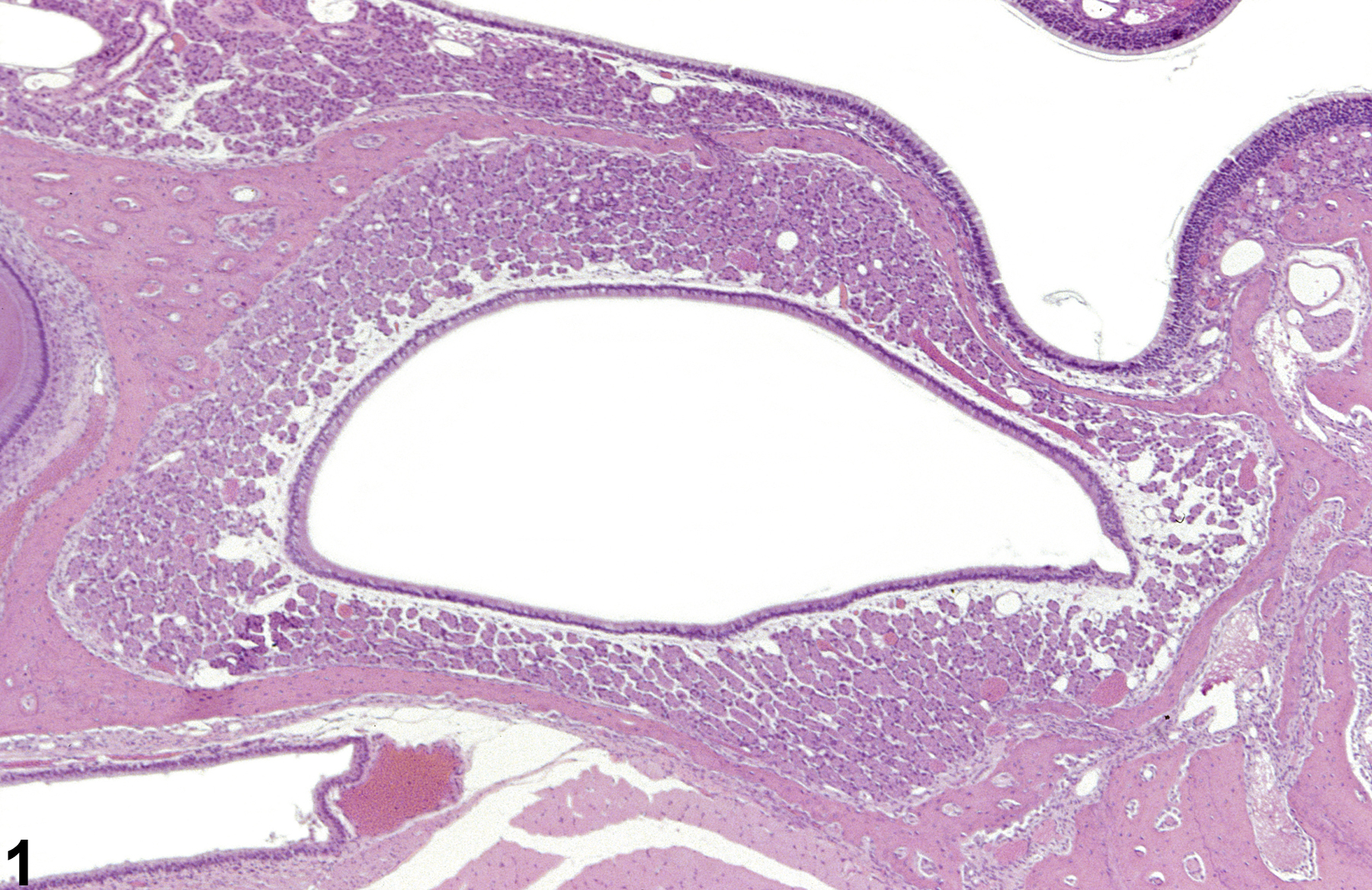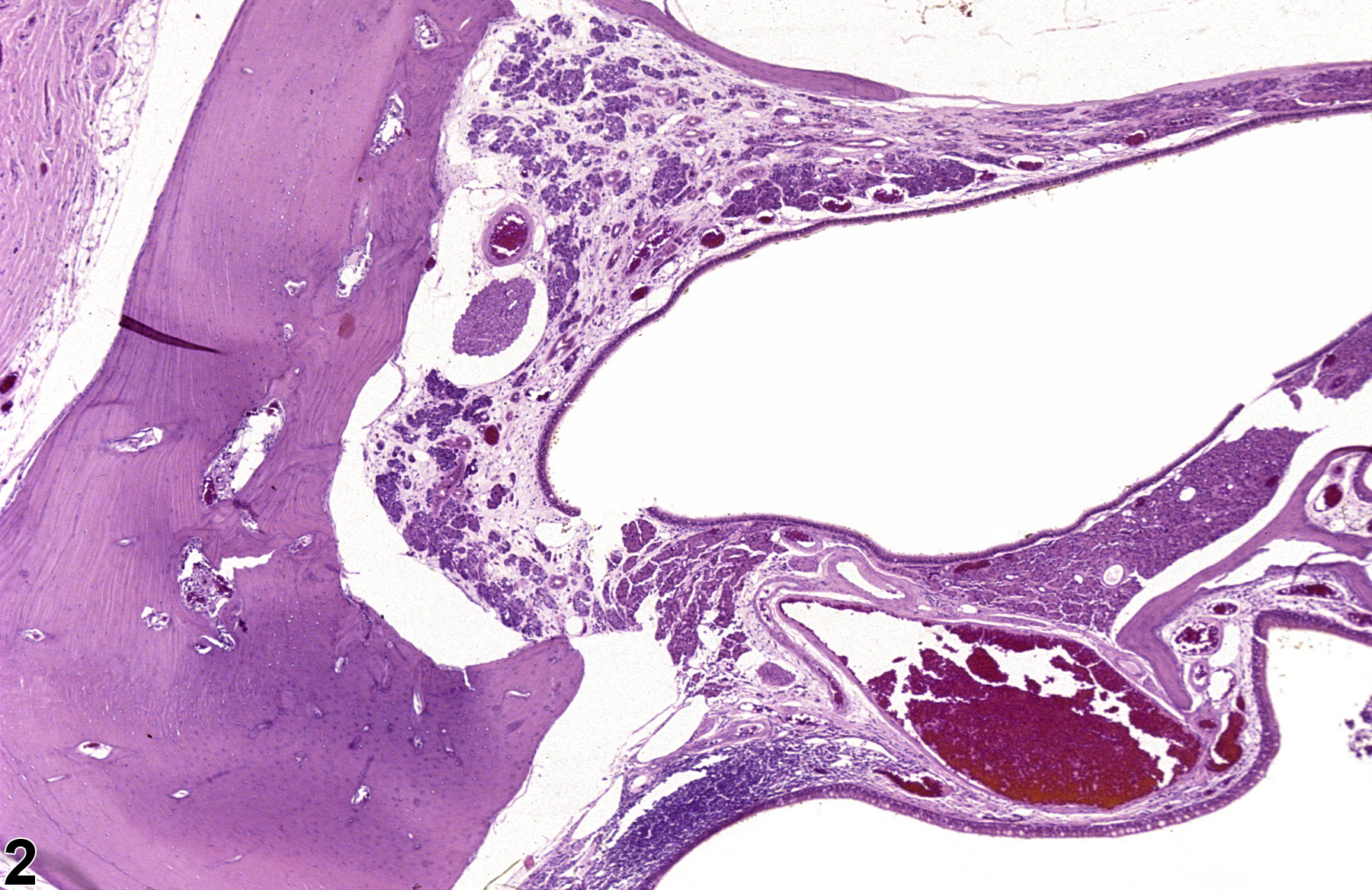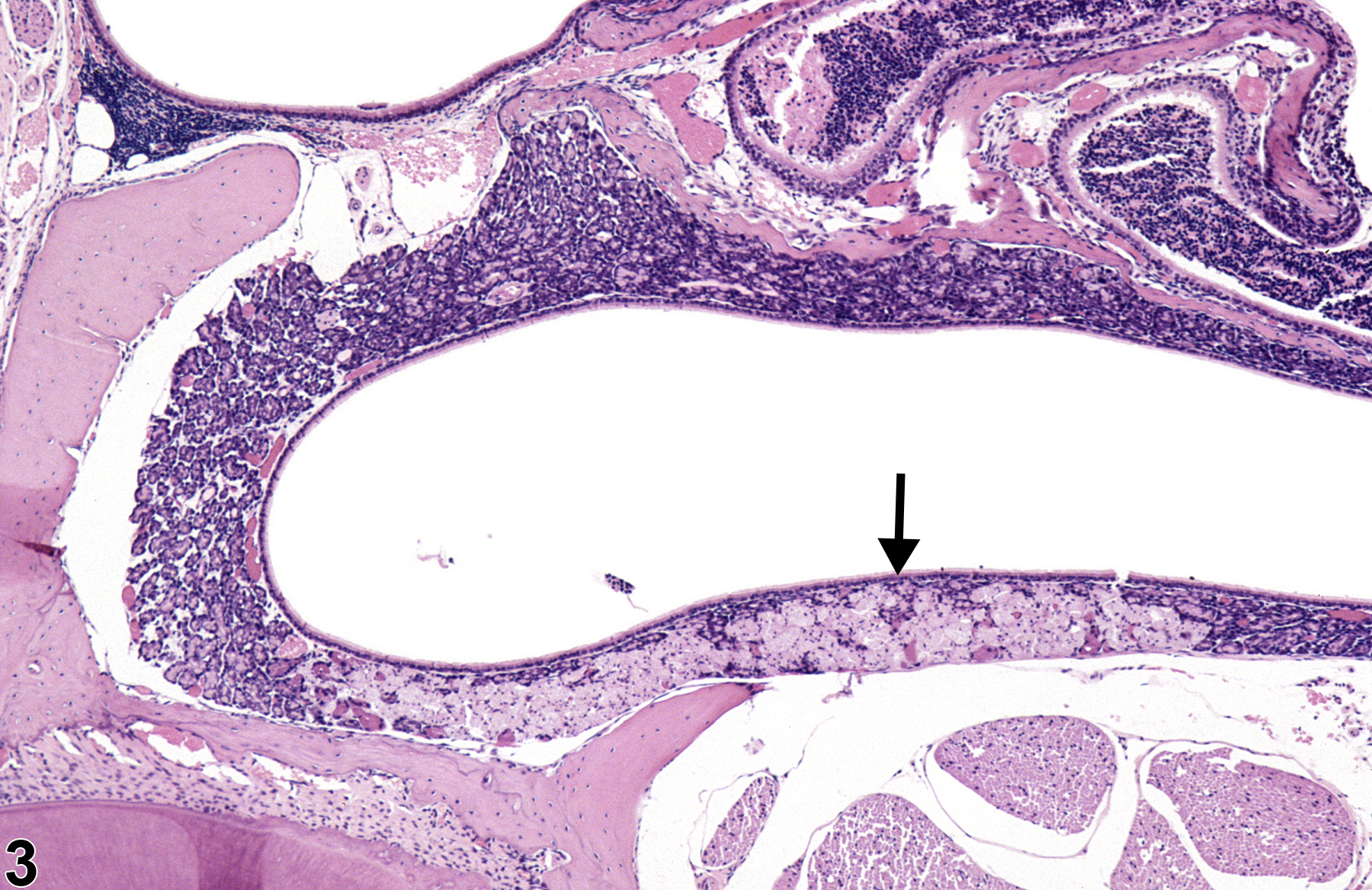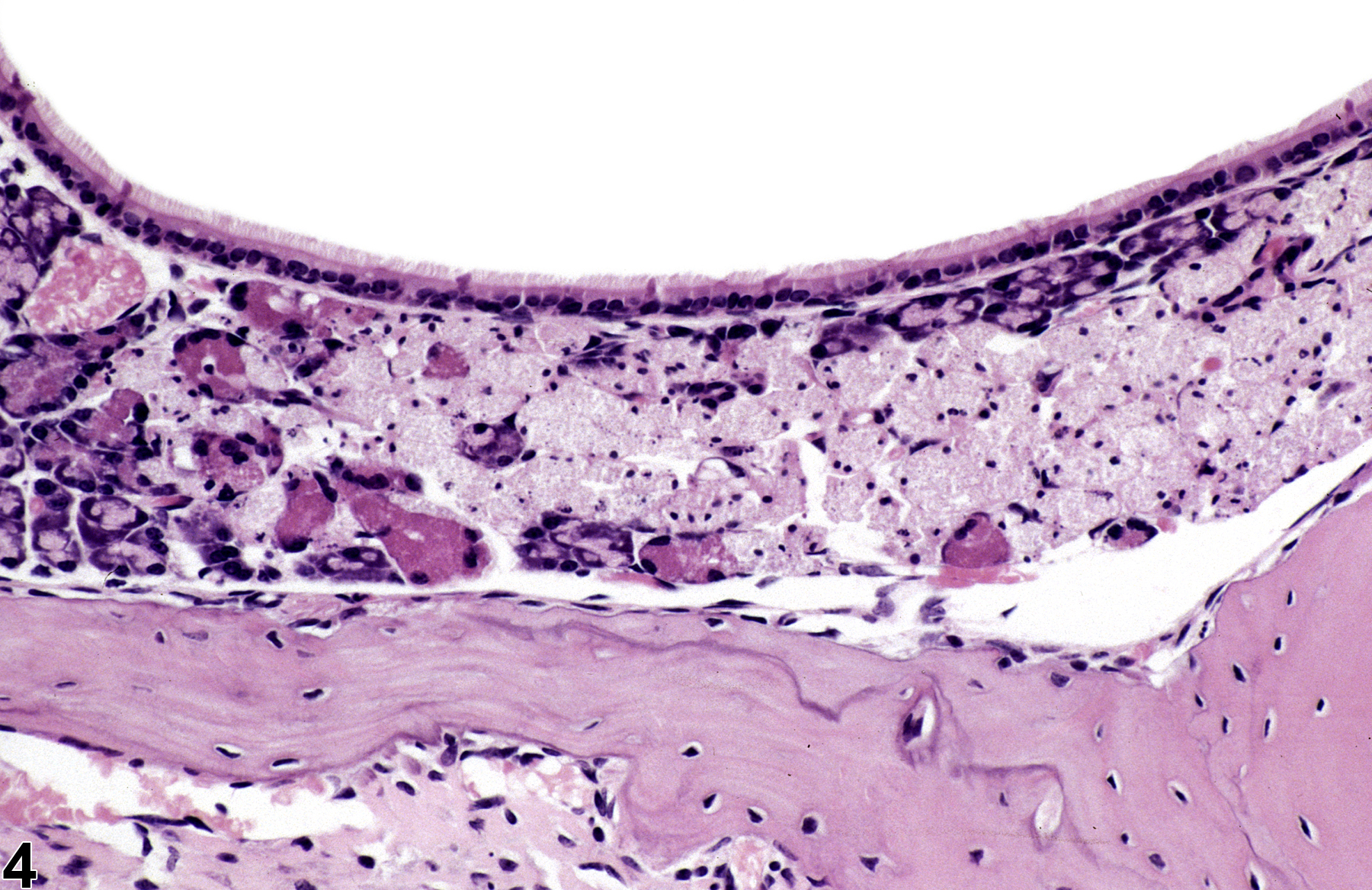Respiratory System
Nose, Steno's Glands - Degeneration
Narrative
Steno's glands, also called the lateral nasal glands, surround the maxillary sinuses and extend into the lateral wall (Figure 1). The ducts of these glands empty into the nasal vestibule. Focal atrophy can be seen as an aging change in mice, but this is rare. Steno's glands are known to have high metabolic capacity and can be targeted by certain chemicals. Atrophy, the end product of cell loss due to necrosis, apoptosis, or degeneration, manifests as the absence or a decrease in number of glands, or shrunken glands (Figure 2, Figure 3, and Figure 4). Often, the glandular ducts remain. The space left by the loss or shrinkage of the glands may simply contain the normal extracellular matrix, or the glands may be replaced by fibrosis. Necrosis of Steno's glands is characterized by the presence of pyknotic nuclei, cytoplasmic eosinophilia, indistinct cell outlines, or exfoliation of cells and cellular debris. Degeneration, which is considered to be reversible form of cell damage, is characterized by cell blebbing, cellular disorientation, cellular eosinophilia, swelling, loss of cell-to-cell contact, or vacuolar changes within the epithelium and also may be accompanied by inflammation. Degeneration and necrosis may be accompanied by inflammation.
Whenever present, degeneration, necrosis, and atrophy of Steno's glands should be diagnosed and assigned a severity grade. Atrophy of Steno's glands should be diagnosed when the amount of Steno's gland tissue is decreased but there is little evidence of degeneration, necrosis, or inflammation. If the features of degeneration or necrosis described above are present, then the diagnosis should be recorded as such. If inflammation is present concurrently, it should not be diagnosed separately unless warranted by its prominence or severity, but should be described in the pathology narrative.
Boorman GA, Morgan KT, Uraih LC. 1990. Nose, larynx, and trachea. In: Pathology of the Fischer Rat: Reference and Atlas (Boorman GA, Eustis SL, Elwell MR, eds). Academic Press, San Diego, 315-337.
Herbert RA, Leninger JR. 1999. Nose, larynx, and trachea. In: Pathology of the Mouse: Reference and Atlas (Maronpot RR, ed). Cache River Press, Vienna, IL, 259-292.
Monticello TM, Morgan KT, Uraih LC. 1990. Nonneoplastic nasal lesions in rats and mice. Environ Health Perspect 85:249-274.
Full Text: https://www.ncbi.nlm.nih.gov/pmc/articles/PMC1568333/National Toxicology Program. 1986. NTP TR-316. Toxicology and Carcinogenesis Studies of Dimethylvinyl Chloride (1-Chloro-2-methylpropene) (CAS No. 513-37-1) in F344/N Rats and B6C3F1 Mice (Gavage Studies). NTP, Research Triangle Park, NC.
Abstract: https://ntp.niehs.nih.gov/go/9842National Toxicology Program. 2006. NTP TR-534. Toxicology and Carcinogenesis Studies of Divinylbenzene-HP (CAS No. 1321-74-0) in F344/N Rats and B6C3F1 Mice (Inhalation Studies). NTP, Research Triangle Park, NC.
Abstract: https://ntp.niehs.nih.gov/go/17633Sills RC, Morgan KT, Boorman GA. 1994. Accessory nasal structures in toxicologic studies. Inhal Toxicol 6(suppl):221-248.
 Nose, Steno's glands - Normal in a male F344/N rat from a chronic study. Normal Steno's glands are shown for comparison with Figures 2-4.
Nose, Steno's glands - Normal in a male F344/N rat from a chronic study. Normal Steno's glands are shown for comparison with Figures 2-4.





